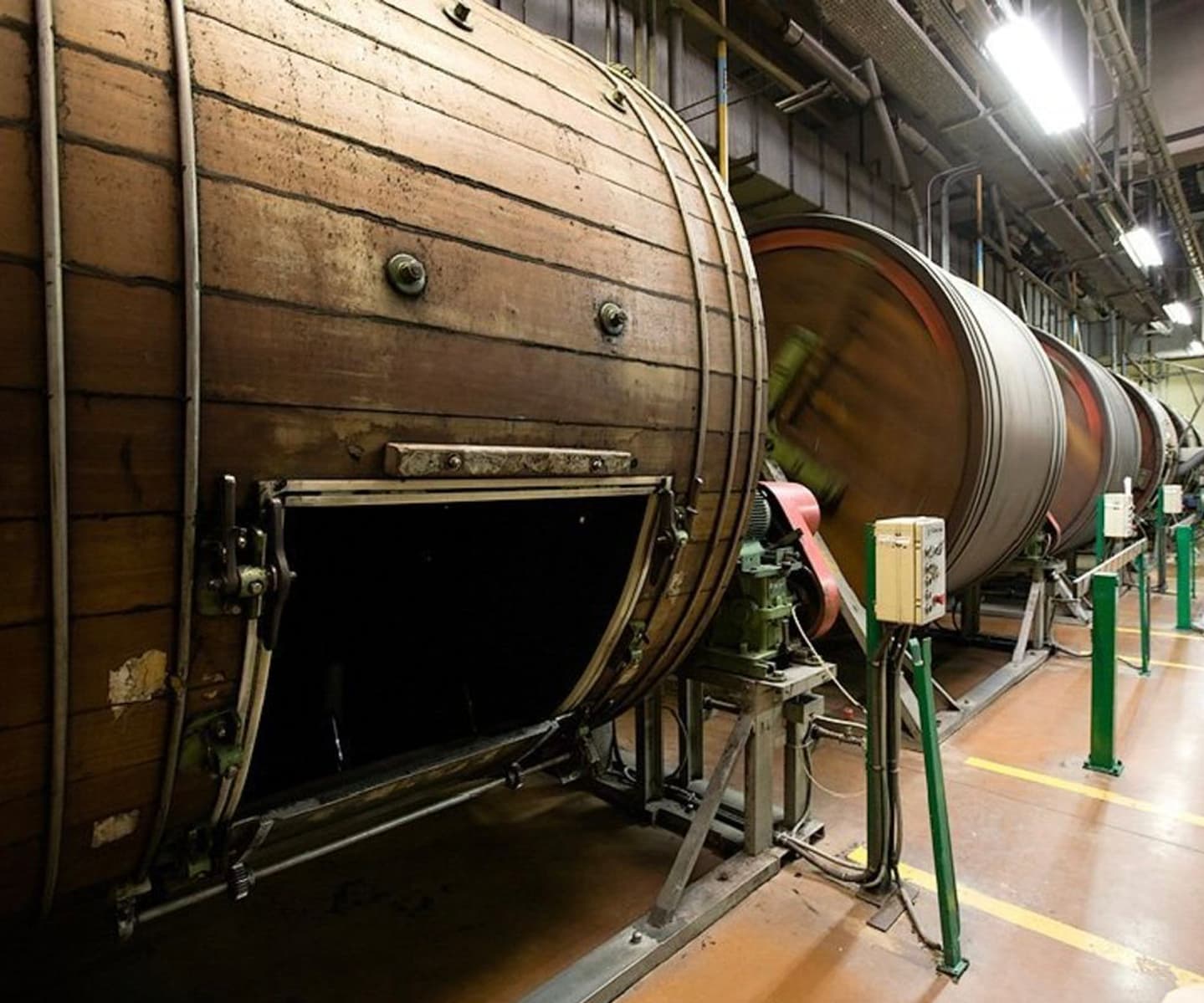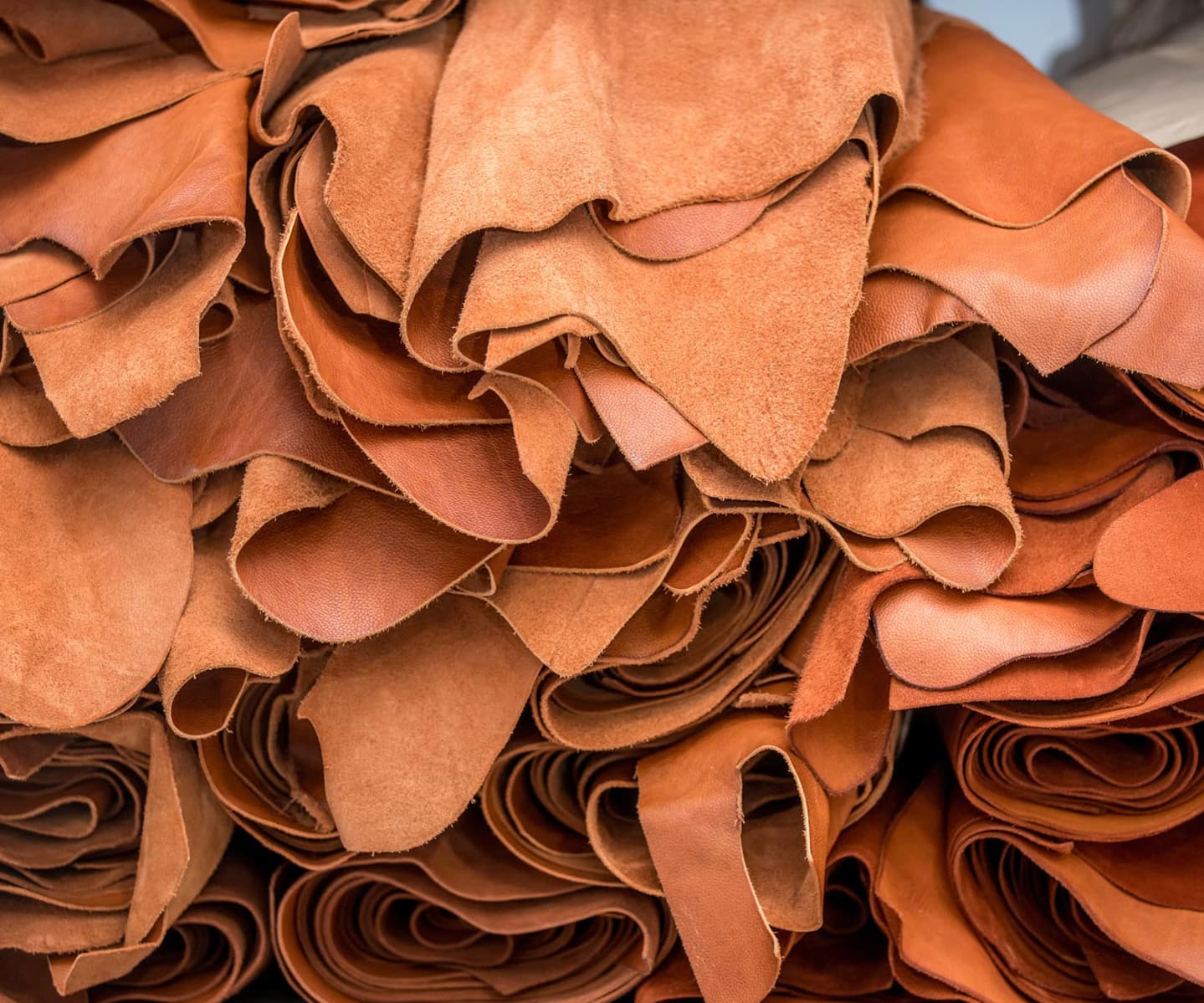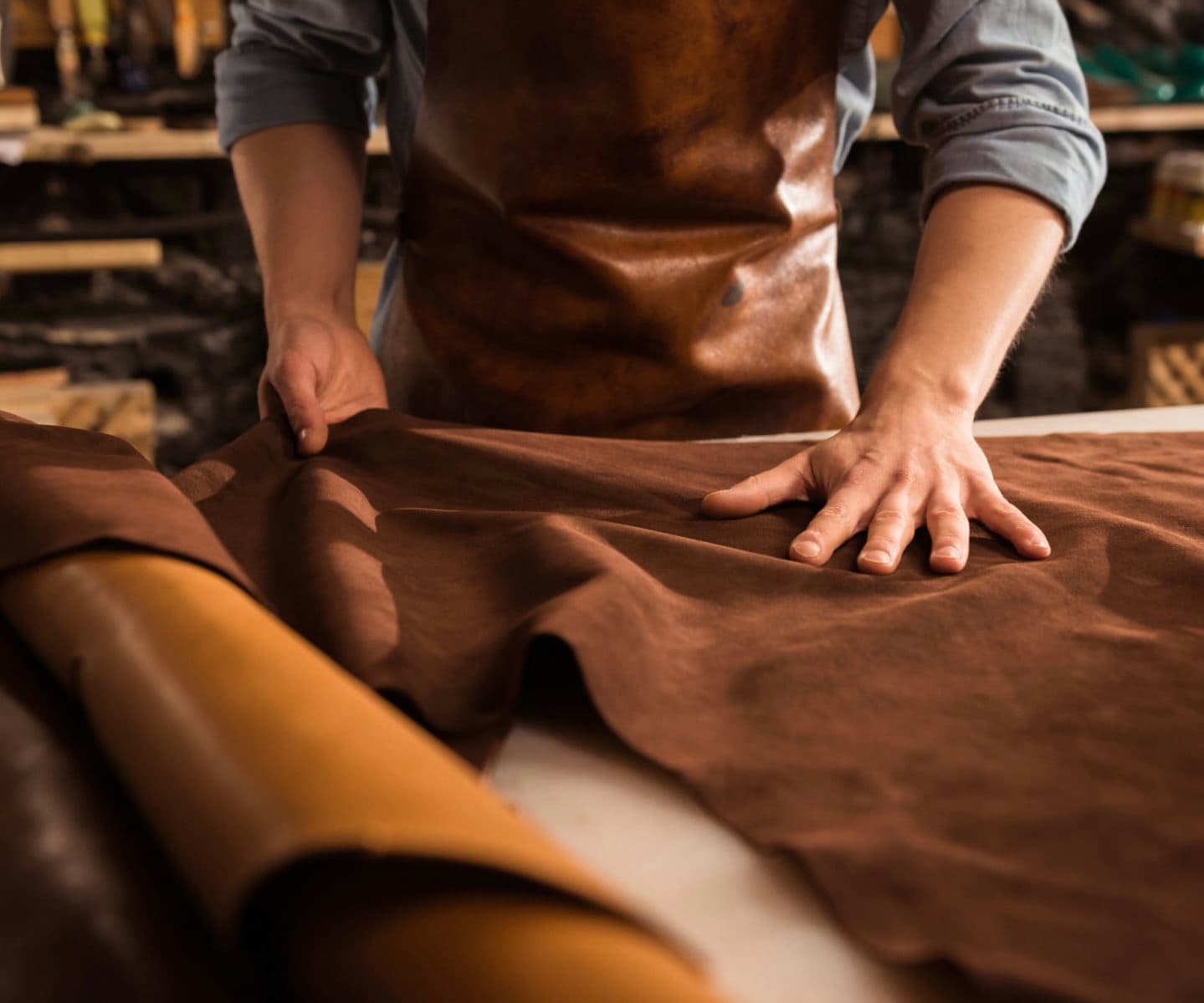After the hides are removed from the carcass, they are salted through and through at the slaughterhouses to prevent decay. After they are salted, 55% of the water in the hide is removed, and they are dried for 3 to 6 days. The rawhides are then sold to tanneries.
We design and develop sophisticated natural leathers with the highest level of excellence. In order for the tanning process to work properly, the dry salted hides must be washed free of the salt. This is done by soaking the hides in water to which chemical wetting agents (similar to household detergents) and disinfectants are usually added for 8 to 20 hours, depending on the thickness of the hides. This soaking procedure rehydrates the hides to their original flaccid condition and removes the dirt. The hair must now be removed from the hides. This is done by soaking the hides in chemicals, or depilatory agents, which destroy the hair by attacking the hair root so it will release freely from the hides, loosen the epidermis, and remove certain soluble skin proteins that lie within the hide substance without destroying the desirable collagen of the hides. Excess flesh, fat and muscle must now be removed from the hides. This is done with a fleshing machine. All the depilatory chemicals must now be removed from the hides. It is done by washing the hides in ammonium sulfate or ammonium chloride and then water in big drums. These chemicals not only clean the depilatory chemicals from the hides, they also adjust the acid- The hides must be placed in an acid environment (low pH) so they will be ready to accept the tanning materials, because chrome- Raw collagen fibers of the hides must be converted into a stable product which is no longer susceptible to rotting. This is done, by adding chrome- The excess moisture must be removed from the hides. This is done, by placing each hide through two large rollers similar to those on a clothes wringer. Hides must now be split into the desired thickness. Un- The thickness of the hides must be made uniform all over the hide. This is done with a shaving machine through which the hides are run. The helical shaped cutting blades level the overall thickness to exact specifications and open the fiber structure to better receive subsequent chemical processing. This process is done to impart special end- As soon as the re- This is the last of the wet chemical operations to which the leather will be subjected, this addition has the most pronounced effect on how soft a leather will be and it contributes greatly to its tensile strength. The more fat- This operation stretches the hide, while compressing and squeezing out the excess moisture. It puts the hides in the proper condition for drying. The hides are stretched across a perforated frame and held in place with clips called toggles. One hide is clipped to each side of the frame. The frames are then slid into channels in drying ovens. Leather is staked to make it pliable. In combination with the correct fat- The hides are placed in a large dry drum and tumbled until the desired softness is obtained. This process improves the final appearance of the hides by lightly sanding the surface to remove some of the natural imperfections such as scratches, healed scars, etc. It provides the hide with better cutting yield. This process applies film- Usually, the final step in the leather process. During this process, heat presses a chosen grain into the surface of the hides. Leather glossary
Leather process



Let´s start a project together.